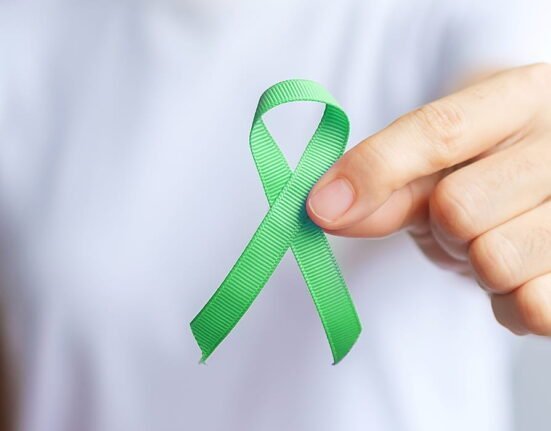How do we identify a hero or villain in a movie? There is a very thin line. We use a scale of morality, if a fictional character does things good by following the morals they’re heroes. If someone does good things by deviating from the moral standards, we have in our mind are called villains. Sometimes we need something bad to praise something as good. In movies, we use the same tactics to show a hero as a good person by comparing him with the anti-hero or villain. It’s easy to find why we like a hero. We also get attracted to the role of Villains. Did you ever think about it? How about we explore the reason behind this?
Read More: From Gabbar to Voldemort: Why Villains Are So Important?
Freuds’Id
The villain is portrayed as the one who does things that are prohibited. Performing such activities can bring in negative consequences but watching things that are socially prohibited can give a sense of contentment. The things villains do are what the id says. They don’t have control over the id and instead, they act out the wish of the id, which gives contentment.
Carl Jung’s Shadow
Carl Jung proposed a concept called archetypes. Archetypes are universal symbols and human behaviour that determine the personality. The archetypes are self, persona, shadow, anima and animus. The shadow contains the repressed memories, ideas, wishes, and weaknesses and represents wildness and chaos. The villain performs activities like slapping others, hitting or violating the social norms. As we refrain ourselves from doing such things in shadow. We may experience happiness and we feel a sense of pleasure.
Read More: The Puzzle of Self: Exploring Identity in a Demanding World
Curiosity and acceptance
The villains we see in the movie will have a complex backstory behind them. The fans find it interesting to interpret the backstory the villain has. We usually find it interesting to solve mysteries and in a similar way we will find out and connect the backstory with the present behavior of the villain. If the backstory is quite understandable or justifies the present behaviour, we’ll accept.
Glorification of toxicity
In this modern world, we started to generalize toxicity as a new normal behaviour. And even in recent movies, we started incorporating some toxic traits or a small number of villainous traits in heroes. Example: Movies show, a person who felt unloved and was longing for love and care. If a person comes and shows care, they need to conform to them and tolerate them. Even though they are not positively showing care. We started accepting all this stuff. And to some extent, people have even started accepting and craving the toxic traits. And similarly, we started acknowledging the villains.
Read More: Ways to Teach Values to Children And Nurture Moral Superheroes
Psychological Reactance
Psychological reactance is our emotional response when we are restrained from performing certain behaviours. It gives a drive to act against it. In a conventional setting, we are always forced to be rooted towards the moral values or morality. Therefore, we find the villains likable (Keen, Dunaway and Mccoy 141).
Character Motivation
According to the Affective Disposition theory by Zillmann, if characters do perform moral behaviour with good intentions, we tend to like them and we dislike those who behave immorally with bad intentions. So, a character is liked or disliked based on the intentions behind their immoral act.
Schema
In the context of ‘what is beautiful is good’, we have the ideology that when a person with good looks will possess good traits like intelligence, honesty etc. Before days, cinema portrayed a villain character as someone terrific in his look. Nowadays in modern cinema, villains are always characterized as good-looking, intellectual, powerful, and holding authority. There comes the role of schema. We attribute the good-looking villains to possess good personality traits and tend to develop likenesses towards them.
Machiavellianism
An individual with Machiavellianism tends to manipulate others for their selfish needs. People with Machiavellian traits are attracted to the Dark Fictional Characters (DFCs). This happens because of the identified similarity between the villains and themselves.
Moral Disengagement
Seeing or associating ourselves with the main character increases our fictional engagement. In order to maintain fictional engagement, we tend to associate ourselves even if the character is performing activities against our moral values. Raney proposed a term called “moral disengagement”. He posits that moral disengagement is a defence mechanism that we use to enjoy Dark Fictional Characters (DFCs) like villains by temporarily taking a break from our moral judgments.
Hence we like the villains and also will start to sympathize with them. He suggests that it is crucial to watch a movie that has immorality with full involvement or else we would judge ourselves for liking a fictional character who’s immoral.
Read More: Investigating the Psychology of ‘Fangirl’ Culture and Female Attachment to Fictional Characters
Imaginative Resistance
Researchers also suggest something called ‘imaginative resistance’, which means a reluctance to show interest in immoral fiction. As a result, people tend to avoid immoral stories or make them dislike the villain characters. Hence, a person who practices imaginative resistance either does not do moral disengagement or will not watch a movie that is immoral. Individuals with imaginative reluctance tend to show dislike towards the villain or DFCs. Researchers also found that people accept violence as a response to violent acts. And hence, a hero who performs violence in response to violence is considered acceptable. We do not find morality in such cases.
Summing up
In conclusion, the reasons behind our attraction to villain characters in movies, novels, and crime thrillers are multifaceted. There is no single factor we can say; rather it’s a combination of psychological traits, moral disengagement and personal identification with the character. Factors like imaginative resistance, Machiavellianism, and moral flexibility determine how we engage with morally ambiguous characters.
Supervillains are rebels generally for purely selfish reasons. But some see themselves as the hero.
Langley
References +
Black, J. E., Helmy, Y., Robson, O., & Barnes, J. L. (2018). Who can resist a villain? Morality, Machiavellianism, imaginative resistance and liking for dark fictional characters. Poetics, 74, 101344. https://doi.org/10.1016/j.poetic.2018.12.005
Tiwari, S. (2022). Sympathetic villains in film and Literature: The psychological appeal of immorality in fiction. In The Criterion: An International Journal in English (Vols. 13–13, Issue Issue-I). https://www.the-criterion.com/V13/n1/FL01.pdf
Krakowiak, K. Maja and Mina Tsay-Vogel. “What Makes Characters’ Bad Behaviors Acceptable? The Effects of Character Motivation and Outcome on Perceptions, Character Liking, and Moral Disengagement.” Mass Communication and Society 16, (2013), pp. 179 – 199.













Leave feedback about this